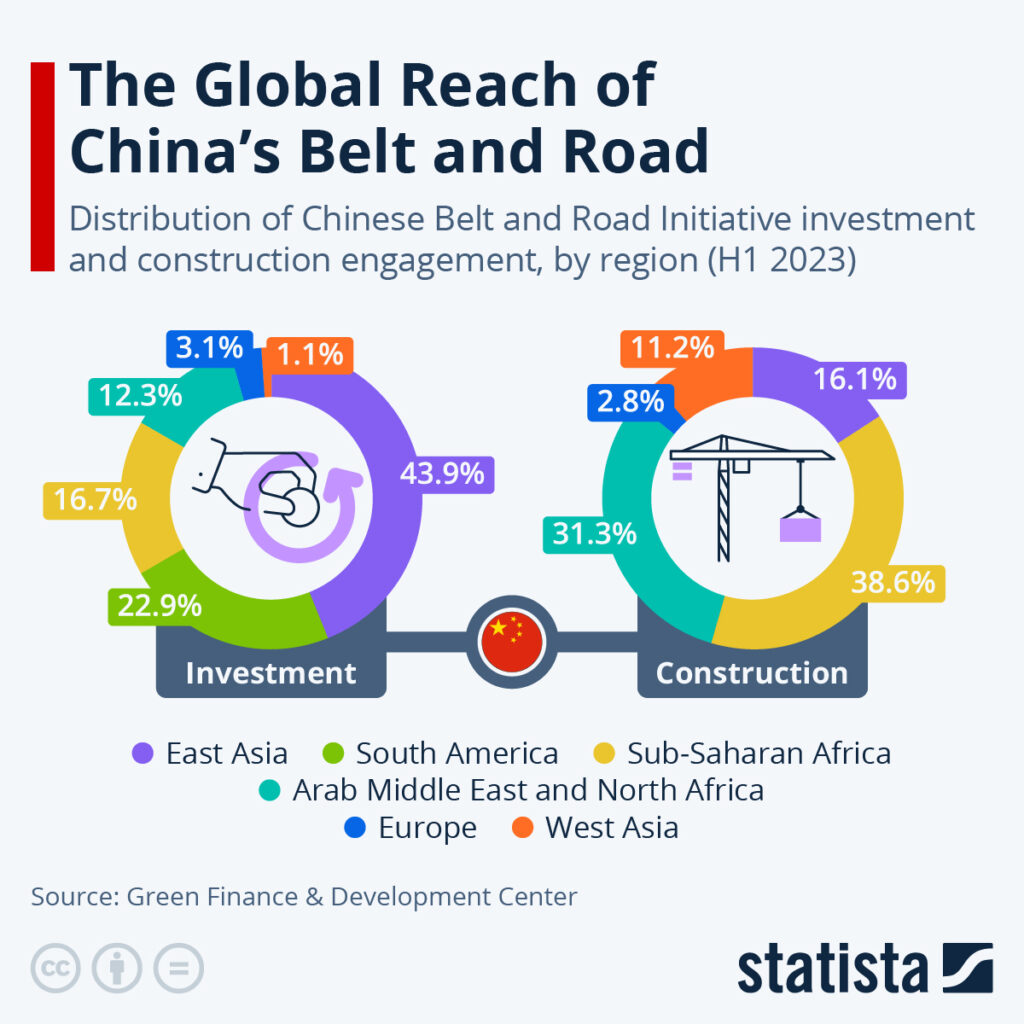The Chinese Belt and Road Initiative, a Chinese plan to build international influence, has made China a significant financial partner to 148 different countries in the world. While this has led in some cases to new infrastructure, a recent white paper on the subject from Boston University reports that many countries are now seriously in debt to China.
“Suffering from the compounded impact of multiple external shocks, developing countries are experiencing a debt crisis due to the COVID-19 pandemic, climate shocks and advanced economy interest rate policies,” they point out. “Many of the recipients of Chinese finance are subject to significant debt distress, with several countries owing China a significant share of their external debt.”
One example is Laos, a nation of more than 7 million people which owe more than 12 billion to China — 65% of their GDP. With inflation at 41% over the past year, Laos is unable to pay this debt. “Laos has had to make compromises, including on its own sovereignty, to appease Beijing and seek some financial forbearance, allowing Chinese security agents and police to operate in the country as Beijing extends its repression beyond its borders, according to human rights groups and Lao activists,” says the Washington Post.
Is it only Asia?
Statista shares this illustration of China’s influence in various regions of the world. China’s largest investment is in East Asia, but the second largest sum is owed by South American nations. Construction is strongest in Africa and the Middle East, but debt in South America is significant. Venezuela owes 21.5% of its GDP to China. Surinam owes more than 34%. Ecuador owes 15%. In the Caribbean, Jamaica owes 11.2% and Cuba owes 3.8% of its GDP to China.
What’s the point?
The immediate goal of the Belt and Road initiative is to create new trade routes for China. A report from Chatham House explains the motivations: “The first, and most discussed internationally, is China’s rivalry with the US,” they say. “There is no doubt that China’s intention is also to make participating nations interdependent with the Chinese economy, and thereby build economic and political influence for China.”
In all, China has spent about a trillion dollars in nations around the world in an effort to gain that economic and political influence. In doing so, they have created jobs for their population and opened markets for their goods. They have also gained enormous power over the most financially unstable nations, like Laos and Venezuela. Chatham House goes on to say, “‘Debt trap diplomacy’ is the accusation that China uses Belt and Road as part of a manipulative global strategy, funding major infrastructure projects in developing nations with unsustainable loans, then using the debt to gain leverage over those governments.”
The European University Institute suggests that China’s overtures in Latin America are intended to improve China’s image there. “Latin America also plays a crucial role in China’s effort to isolate Taiwan, an island country that China sees as a breakaway province,” they report. “Eight of Taiwan’s 14 remaining diplomatic partners are in Latin America and the Caribbean, driving China’s plans to lure Taiwan’s allies through economic agreements and the BRI.”
How could this affect Puerto Rico?
Puerto Rico has debt problems, but they do not involve China — at this point. As a territory of the United States, Puerto Rico has the support of the United States. If Puerto Rico were to become independent, however, Puerto Rico could become a tempting prize for China.








No responses yet